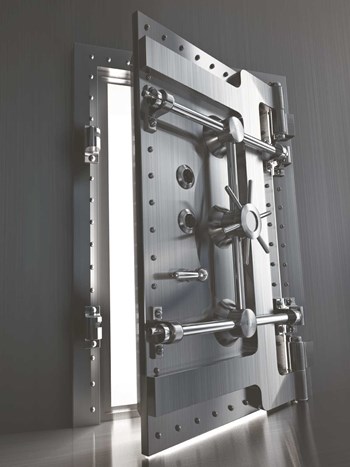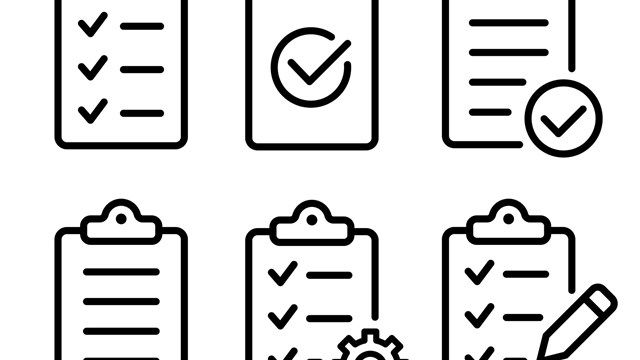
What if your building’s boiler breaks down, or a hailstorm necessitates major emergency roof repairs for your association? Of course the first question that arises in these situations is whether your HOA’s reserve fund is adequate to cover the necessary repairs—but perhaps an even more important question is, does your reserve have enough liquidity that funds are readily available when you need them? After all, money it in itself is useless if you can’t access it and apply it where it’s needed.
Know Your Needs
A co-op or condo’s reserve is meant to cover expenses that exceed its normal operating budget—things like major capital improvements, unexpected repairs and the replacement of building systems. In this time of failing banks and falling markets, it’s important to take a closer look at your reserve fund—no matter how healthy and wisely invested you believe it to be.
“Many condominium documents and homeowner association documents describe the creation of a reserve fund,” says Stuart Lieberman, Esq. of Lieberman & Blecher, P.C. in Princeton. “Often, the governing documents will identify the kinds of financial instruments that can be used in order to grow the fund. In general, these will be secure, less risky kinds of investments, such as highly rated bonds, and low risk stocks. While the return may not be as great with these investments, they are secure and the money will most likely be available when it needs to be spent for the specified purposes.”
Some co-ops and condos build their reserve fund with flip taxes or transfer fees, while others put a line item in their annual budget that goes toward the reserve. Some assign transfer fees or capital contributions collected at the time of sale, and buildings with rental income often earmark that money for the reserve. Reserve money can also come from refinancing.
Wherever reserve funds come from, they are managed by a the building or association building’s board, whose members in turn are elected by residents to make sound business decisions on their behalf—and these days, that’s no small task.
“Given the current financial crisis, much of the common investment wisdom for reserve funds needs to be carefully re-assessed,” said Jay Novet, founder of the consulting firm Budget Saving Strategics in Great Neck, a company that gives financial management advice to tri-state area co-op and condo associations.
Hire an Engineer
Residents may feel secure when they read that their building has, say, a million dollars in reserve funds, but what if a million-and-a-half dollars-worth of repairs are suddenly needed? A fund’s size means nothing if not realistically compared with a building’s needs. Newer buildings can generally expect a longer useful life on major systems—boilers, roofs, and so forth—so they typically require a smaller reserve fund than older buildings. To come up with a target reserve amount, some boards rely on general formulae (‘X’ many times more than the standard maintenance, for example) to determine some magic figure to shoot for, but the pros warn that such methods are arbitrary and can therefore be dangerous.
It’s important to know exactly what kind of shape your association’s structures and systems are in so you can plan consciously and realistically for both future repairs and unexpected emergencies—and doing that requires the help of an engineer, who can carry out what’s called a reserve study.
A capital reserve study determines an estimate for the amount of money an association needs to have saved to conduct repairs of common areas. “[Reserve studies] are important because they assure the association that when it comes time to replace the capital assets that make up the common elements of the development, they will have the money to do it,” says Mitchell Frumkin of Kipcon, an engineering firm in North Brunswick.
According to Daniel Rush, a reserve specialist with Toms River-based engineering firm Flannery Webb & Hansen, “An engineer will assess the common elements of the community and put together a funding plan so that they can have adequate money to replace items such as roofs, roadways, siding, lighting, things like that. We make recommendations as to what a budget needs to be—how much money a unit owner would need to contribute each month in order to keep their reserves healthy and funded adequately.”
Additionally, many reserve experts are advising their client associations to expand the function of their reserves in light of the current economic situation. With unemployment rates climbing, HOAs may begin to see more residents defaulting on their monthly maintenance payments. This could cause communities to face cash flow problems that impact their day-to-day operation. Deepening the reserve fund to act as a cushion for slow payers is one option for getting through the tough times, but if that’s not possible, an alternative might be to make a line of credit available for such situations.
Use Existing Resources
“I recommend two kinds of experts in order to start a reserve process,” says Lieberman. “The first is an engineer who can review the common elements and publish a schedule indicating the projected life-span of the various expensive components of the common elements and determine likely costs of repair to, or if necessary—as in the case of roofs—replacement.
“With that schedule in hand, I would also recommend consulting with a trusted financial advisor,” Lieberman continues. “That advisor will help create a portfolio that will meet the kind of structure proposed by your engineer.”
A full-blown engineering assessment can be expensive—maybe even prohibitively so for some associations. In this economic climate however, boards may simply have to brace themselves and face such fears. Most The expertspros agree that a detailed assessment of an HOA’s condition is better than an uninformed guess.
Maintain Liquidity
A reserve needs to be more than just adequately funded—it also needs to have enough liquidity that funds are available when they’re needed. For instance, if the boiler breaks when all of an association’s money is tied up in a certificate of deposit (CD) that won’t mature for two years, those funds are all but useless. So as part of a building’s assessment, it’s necessary to estimate not just which repairs and replacements will be needed, but when they’ll be needed.
“The estimate should be done on some kind of study of fixed assets of the association and what needs to be replaced when,” says accountant Richard Montanye of Marin & Montanye LLP in Roslyn, New York.
Investments should be spread out according to these replacement timeframes. “The ideal scenario that I’ve seen work over time is to use a brokerage account and invest in CDs of varying maturity, so there’s always something coming due,” Montanye says.
Minimize Risk, Maximize Yield
In terms of investment, the advice of financial advisors is largely the same today as it has always been: focus on the preservation of principal rather than reaping big returns.
According to Gary Kokalari, a senior financial advisor at Merrill Lynch & Co.,
“Minimize risk, maximize yield,” has always been his mantra in working with co-ops and condos over more than a decade. He advises HOAs and buildings to “seek safety and guarantee of investment,” but says that nonetheless, most buildings park funds in money market accounts, which are not insured by the Federal Deposit Insurance Corporation (FDIC). He said boards make this mistake because they don’t know otherwise, or think alternatives would require too much work.
Investing wisely doesn’t have to be difficult, though.
“A brokerage account is a good idea,” said Montanye. “It gives you a central spot to keep records and it eliminates multiple bank accounts, which can be difficult to track.” He has frequently seen accounts get lost when boards change over.
Personalize Your Portfolio
A broker can work with a board to build and maintain an ideal profile for their community. Most likely, it will primarily contain CDs.
“It’s a low interest rate environment right now, so CDs with varying maturities work well,” says Montanye. “You can get better yields going longer term.”
Most importantly, CDs are safe, as long as they’re taken from a number of institutions to provide insurance across the portfolio. Previously, the FDIC insured CDs at up to $100,000 per institution, but recently that amount was increased to $250,000, effective through the end of 2009. Therefore, dividing a reserve fund into FDIC-insured portions is easier than ever.
Treasury Securities, which Novet says offer “rock-solid safety,” are also a good bet. There’s no limit to FDIC insurance on these investments, but yields are lower than for CDs. In fact, as of December 2008, short-term Treasury Bills now yield nothing.
“Yes—zero,” says Novet. “Just like putting your cash under the proverbial mattress.” Still, such investments are safe and accessible—and in today’s economy, that’s something.
According to Novet, another possibility for associations who choose to not work with a broker, there’s is the Certificate of Deposit Account Registry Service or CDARS program. It allows member banks to invest up to $50 million per client in other member banks, divided into FDIC-insured portions for complete protection. Like working with a broker, the CDARS program only requires boards to monitor a single statement.
Keep a Close Eye
So in the future, when the economy improves, should boards take more risks with their reserve fund in pursuit of high yields? Kokalari’s answer is simple: No. Reserve funds are not meant as revenue-generating engines—they’re insurance against emergencies and protection for residents against big assessments and fee hikes.
“As economic cycles evolve, so too should portfolio optimizing and balancing,” says Novet. For example, buildings with funds tied up in short-term Treasury Bills— which now yield nothing—may wish to move their money to CDs.
Monitoring portfolios is important even in better economic times. A few years ago, Novet says, he learned that part of his own co-op’s reserve fund was invested in instruments issued by a company that was formerly well-regarded, but had since been de-listed from the New York Stock Exchange. He immediately alerted the board, and the necessary changes were made. If he hadn’t, interest and principal on his co-op’s reserve fund might not have been returned at the investment’s maturity.
A wise decision today may no longer be a wise decision tomorrow, so keep a close eye on investments.
Get More Information
“The challenge is always to respect both the market’s destructive power as well as possible longer-term opportunities,” says Novet. “This can be achieved by wise and careful analysis.”
Times may be uncertain, and funds tight at the moment, but that doesn’t let boards off the hook when it comes to protecting and cultivating their buildings’ financial portfolios. Knowing the market, educating oneself about the various products and services available, and remaining vigilant about one’s building finances are all ways a board can help navigate their building through today’s shifting economic landscape.
But they don’t have to go it alone; boards that would like to carefully analyze their building’s specific situation should consult with an outside professional, like an accountant or a broker. Hard work and team effort by association boards and managers are what may help stem the tide of financial crisis, both here at home and in the nation at large.
Alexis Wolff is a freelance writer living in Brooklyn and a contributor to The New Jersey Cooperator.






Leave a Comment